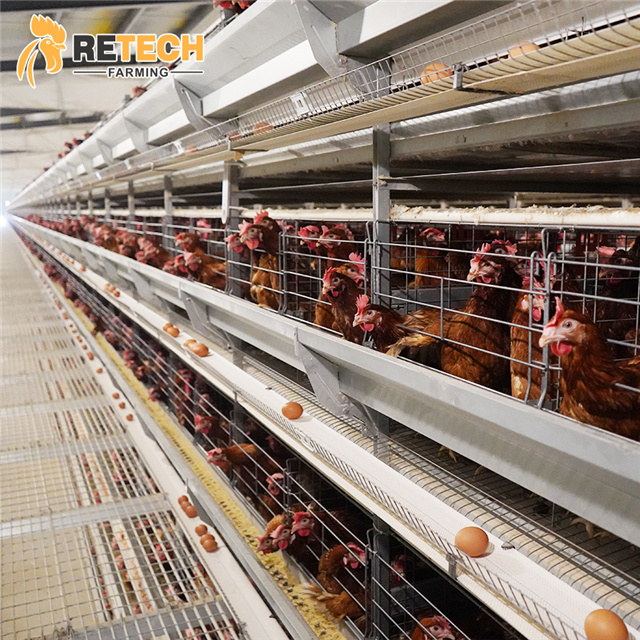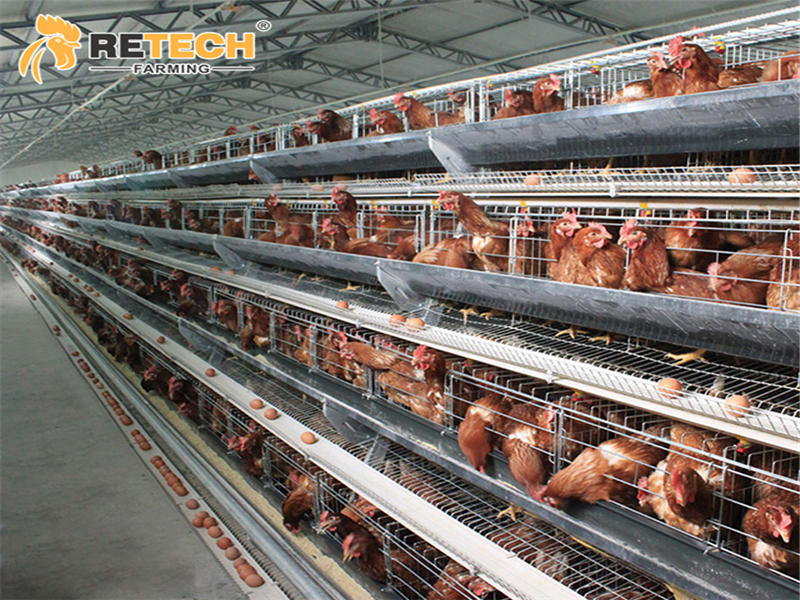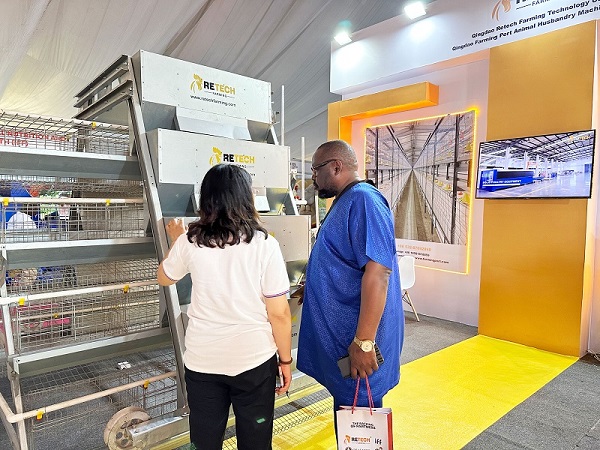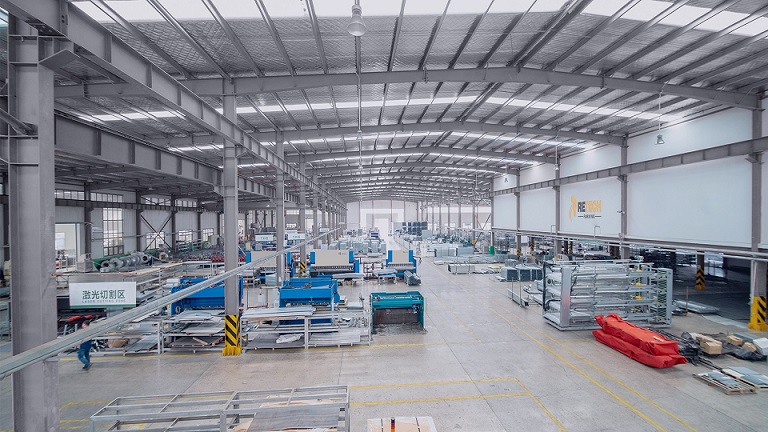Gall cychwyn fferm dofednod dodwy fod yn gyffrous, ond mae'n hanfodol gwneud dewisiadau doeth, yn enwedig.Cewyll batri haencynnig ateb effeithlon ac economaidd i ffermwyr dofednod cynradd, gan wneud y mwyaf o gynhyrchu wyau wrth leihau lle ac adnoddau.
1. Beth yw iâr dodwy?
Mae dodwywyr yn cyfeirio at ieir sy'n cael eu magu i ddodwy wyau at ddiben cyflenwi wyau.
2. Pam Dewis Cewyll Batri Haen?
Ar gyfer ffermydd dofednod newydd neu lai o faint, mae cewyll batri dodwy yn cynnig sawl mantais:
- Cost-Effeithiol:O'i gymharu â systemau magu maes rhydd neu draddodiadol, mae cewyll batri angen llai o fuddsoddiad cychwynnol a chostau cynnal a chadw parhaus.
- Effeithlonrwydd Gofod:Mae cewyll batri yn gwneud y defnydd gorau o le, gan ganiatáu ichi gartrefu mwy o ieir mewn ardal lai. Gall hyn fod yn hanfodol os oes tir neu gyllideb gyfyngedig.
Er enghraifft, os oes gennych 1,000 metr sgwâr o dir i fagu ieir dodwy, os ydych chi'n defnyddio'r model maes, gall eich graddfa fridio gyrraedd 5,000 o ieir; os ydych chi'n defnyddio'r offer cawell ieir dodwy math-A wedi'i bentyrru, gall eich graddfa fridio gyrraedd 10,000 o ieir, gan ddefnyddio'r gofod tir yn effeithiol.
- Cynhyrchu Wyau Gwell:Mae amgylchedd rheoledig cewyll batri yn helpu i optimeiddio dodwy wyau, gan arwain at allbwn cyffredinol uwch a photensial am elw mwy.
Offer cawell ieir dodwyyn sylweddoli bwydo awtomatig, dŵr yfed awtomatig, a chasglu wyau awtomatig. Mae'r cwt cyw iâr caeedig yn mabwysiadu system rheoli amgylcheddol i drosglwyddo awyr iach ac amgylchedd bridio cyfforddus yn effeithiol i'r ieir, lleihau clefydau cyw iâr ac adweithiau straen, a chynyddu cynhyrchiant wyau.
- Rheolaeth Syml:Mae'r system cawell batri cwbl awtomatig yn symleiddio'r broses o fwydo â llaw, yfed dŵr, a chasglu wyau, yn gwella effeithlonrwydd gwaith, yn lleihau costau llafur, ac yn sicrhau sefydlogrwydd graddfa cynhyrchu wyau.
3. Beth yw Systemau Cawell Batri?
A system cawell batriyn cynnwys sawl haen o gewyll wedi'u pentyrru'n fertigol, gyda phob cawell yn gartref i grŵp bach o ieir. Mae'r cewyll hyn fel arfer wedi'u gwneud o Ddur Galfanedig wedi'i Dip Poeth ac wedi'u cynllunio i ddarparu anghenion sylfaenol fel bwyd, dŵr a lle nythu.
4. Ffactorau Allweddol ar gyfer Dewis y Cewyll Batri Cywir:
- Maint a Dwysedd y Cawell:Dewiswch gewyll sy'n cynnig digon o le i ieir symud yn rhydd ac yn gyfforddus.
- Ansawdd Deunydd:Dewiswch ddeunyddiau gwydn sy'n gwrthsefyll rhwd a all wrthsefyll traul a rhwyg. Deunydd galfanedig wedi'i drochi'n boeth yw prif ddeunydd offer cewyll ieir dodwy modern, sy'n fwy cadarn ac yn fwy gwrthsefyll cyrydiad.
- Rhwyddineb Glanhau:Chwiliwch am gewyll gyda chydrannau symudadwy ar gyfer glanhau a glanweithdra hawdd.
- Awyru:AdeMae awyru da yn hanfodol ar gyfer cynnal amgylchedd iach i'ch ieir. Mae pellter rhesymol yn y cawell hefyd yn atal ieir rhag pigo ei gilydd.
- Casglu Wyau:Dewiswch gewyll gyda system casglu wyau effeithlon i leihau torri a halogiad. Mae rhwyd waelod â gogwydd o 8° yn caniatáu i wyau rolio i lawr yn esmwyth.
5. Awgrymiadau ar gyfer Dewis Cawell Batri Economaidd:
Cyflenwyr ymchwil:Dewiswch frand mawr, dibynadwygwneuthurwr offer ffermio dofednodMae gan Retech farming 20 mlynedd o brofiad mewn cynhyrchu offer, galluoedd cyflenwi a chynhyrchu archebion rhagorol, a bydd yn denu mwy o gwsmeriaid i ymweld â'r ffatri yn 2024. Mae'n werth nodi bod ein cynnyrch wedi cael ei allforio i wledydd ledled y byd. Mae offer o'r radd flaenaf a gwasanaethau o ansawdd uchel yn cefnogi Retech i fynd ymhellach ac ymhellach ar ffordd offer ffermio.
6. Cynllunio Eich Fferm Dofednod Dodwy
Wrth ddylunio eich fferm dofednod dodwy, cofiwch ystyried:
- Dewis safle:Dewiswch leoliad gyda dŵr, trydan a draeniad da, ac ardal wastad i ffwrdd o ardaloedd preswyl.
- Awyru:Sicrhewch awyru digonol i atal amonia rhag cronni a chynnal tymheredd iach.
- Goleuo:Mae goleuadau priodol yn hanfodol ar gyfer cynhyrchu wyau, felly ystyriwch osod systemau awtomataidd.
Cewyll batri haencynnig ateb cost-effeithiol ac effeithlon i ffermwyr dofednod cynradd sy'n awyddus i wneud y mwyaf o gynhyrchu wyau. Drwy ystyried ffactorau fel maint y cawell, ansawdd y deunydd, a rhwyddineb glanhau yn ofalus, gallwch ddewis yr opsiwn gorau i ddiwallu eich anghenion a'ch cyllideb. Cofiwch flaenoriaethu lles eich ieir drwy ddarparu digon o le, awyru priodol, ac amgylchedd glân.
Amser postio: 19 Mehefin 2024











